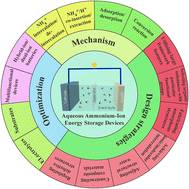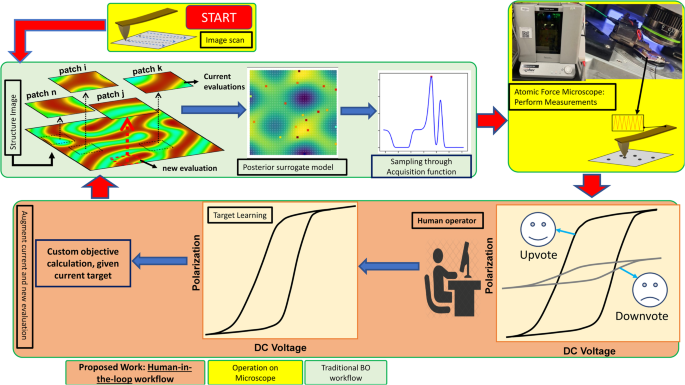2024-02-22 ロイヤルメルボルン工科大学(RMIT)
<関連情報>
- https://www.rmit.edu.au/news/all-news/2024/feb/water-battery
- https://onlinelibrary.wiley.com/doi/10.1002/adma.202400237
- https://onlinelibrary.wiley.com/doi/full/10.1002/sstr.202300371
- https://www.sciencedirect.com/science/article/pii/S2405829723003884
- https://pubs.rsc.org/en/content/articlelanding/2023/ee/d3ee02030d
デンドライトが阻害する原子クラスターの解離と副反応の相乗効果により、超安定性Zn負極の不活性界面保護が抑制される Synergy of Dendrites-Impeded Atomic Clusters Dissociation and Side Reactions Suppressed Inert Interface Protection for Ultrastable Zn Anode
Xiaomeng Tian, Qin Zhao, Mengmeng Zhou, Xinjun Huang, Ying Sun, Xiaoguang Duan, Lei Zhang, Hui Li, Dawei Su, Baohua Jia, Tianyi Ma
Advanced Materials Published: 06 February 2024
DOI:https://doi.org/10.1002/adma.202400237

Abstract
The sluggish ions-transfer and inhomogeneous ions-nucleation induce the formation of randomly oriented dendrites on Zn anode, while the chemical instability at anode–electrolyte interface triggers detrimental side reactions. Herein, this report in situ designs a multifunctional hybrid interphase of Bi/Bi2O3, for the first time resulting in a novel synergistic regulation mechanism involving: (i) chemically inert interface protection mechanism suppresses side reactions; and more fantastically, (ii) innovative thermodynamically favorable Zn atomic clusters dissociation mechanism impedes dendrites formation. Assisted by collaborative modulation behavior, the Zn@Bi/Bi2O3 symmetry cell delivers an ultrahigh cumulative plating capacity of 1.88 Ah cm−2 at 5 mA cm−2 and ultralong lifetimes of 300 h even at high current density and depth of discharge (10 mA cm−2, DODZn: 60%). Furthermore, under a low electrolyte-to-capacity ratio (E/C: 45 µL mAh−1) and negative-to-positive capacity ratio (N/P: 6.3), Zn@Bi/Bi2O3||MnO2 full-cell exhibits a superior capacity retention of 86.7% after 500 cycles at 1 A g−1, which outperforms most existing interphases. The scaled-up Zn@Bi/Bi2O3||MnO2 battery module (6 V, 1 Ah), combined with the photovoltaic panel, presents excellent renewable-energy storage ability and long output lifetime (12 h). This work provides a fantastic synergistic mechanism to achieve the ultrastable Zn anode and can be greatly promised to apply it into other metal-based batteries.
水性マグネシウムイオンキャパシタ用Mn2O3@TiO2@MXeneヘテロ構造を強化する界面分極効果: 内蔵電界による誘導電荷分布と輸送 Interface Polarization Effects Enhancing Mn2O3@TiO2@MXene Heterostructures for Aqueous Magnesium Ion Capacitors: Guided Charge Distribution and Transportation via Built-in Electric Fields
Mudi Li, Yaxi Ding, Siwen Zhang, Ying Sun, Minghui Liu, Jianwei Zhao, Bosi Yin, Tianyi Ma
Small Structures Published: 01 December 2023
DOI:https://doi.org/10.1002/sstr.202300371

Abstract
The electrochemical performances of aqueous magnesium ion energy storage devices rely on the transmission capacity of magnesium ions (Mg2+) at the electrode/electrolyte interface. However, the diffusion of Mg2+ is hindered by the strong electrostatic attraction of doubly charged magnesium cations. Herein, novel Mn2O3@TiO2@MXene three-phase heterostructures with rich phase boundaries and synergistic effects is successfully designed. As expected, the mesoporous Mn2O3/TiO2@MXene can deliver a relatively high specific capacity of 241.5 mAh g−1 at 0.1 A g−1. Moreover, the energy density of the device using mesoporous Mn2O3@TiO2@MXene as cathode can reach 146.62 Wh kg−1. The unique construction of extensive interfaces between different phases creates a polarization effect. This polarization effect leads to intrinsic electric fields that guide charge distribution and promote fast migration of Mg2+ ions. Additionally, the in-situ growth of TiO2 nanoparticles derived from MXene on Mn2O3 helps mitigate the volume expansion of host material, resulting in enhanced cycle stability. By strategically implementing the interface polarization effect and carefully engineering the heterostructure interfaces, we demonstrate a promising electrode synthesis approach with potential commercial viability and robust performance. This research aims to advance the field of materials science by exploring interface engineering and the multifunctional applications of MXene-related materials.
四酸化マンガンにおける高フラックスマグネシウムイオンのインターカレーションを助けるバルク欠陥誘起相転移 Bulk defect-induced phase transition assisting high-flux magnesium ions intercalation in manganese tetroxide
Yaxi Ding, Siwen Zhang, Munkhjargal Bat-Erdene, Jiazhuo Li, Ying Sun, Mudi Li, Minghui Liu, Hui Li, Yongwei Zhang, Hao Ge, Guoqiang Zhao, Zhigen Yu, Bosi Yin, Tianyi Ma
Energy Storage Materials Available online:5 October 2023
DOI:https://doi.org/10.1016/j.ensm.2023.103010

Abstract
The industry consensus is that finding appropriate electrode materials is a major obstacle to the widespread use of magnesium ion (Mg2+) energy storage devices due to challenges like high charge density, intense polarization, and strong interaction with the surrounding matrix of Mg2+. Manganese tetroxide electrodes for magnesium ion energy storage suffer from the limited capacity resulting by pseudocapacitance reaction on the subsurface. Herein, manganese tetroxide with bulk cation-anion dual defects (CADDs-Mn3O4) is constructed for the first time by a facile hydrothermal reduction method. The as-prepared bulk CADDs-Mn3O4 electrode in the three-electrode system exhibits a high discharge capacity of 320.93 mAh g−1 contributing by the intercalation of high flux Mg2+, which achieves capacity breakthrough that ever reported. Coupled with the activated carbon anodes in a full-cell configuration, aqueous magnesium ion capacitors display an energy density of 128.39 Wh/kg with an ultra-long cycling capability, giving 85 % capacitance retention after 6000 cycles. This outstanding performance can be attributed to the metastable region created by unique bulk cation-anion dual defects. The transition of Mn3O4 to layered MnO2 is promoted, achieving the quick migration of magnesium ions in the bulk phase in a large flux, thus breaking the constraint of the spinel structure on the insertion of divalent magnesium ions. Moreover, the manganese cation defects reduce the band gap and increase the electrical conductivity of the electrodes, and the oxygen anion defects change the spin state of the electron and weaken the bonding energy of Mg-O. This work provides a detailed understanding of the structure-function relationship based on the introduction of cation-anion dual defects, and thus opens up new pathways for modifying energy storage materials.
アンモニウムイオン蓄電デバイスの実使用展開:蓄電メカニズム、電極設計、システム統合 Ammonium-ion energy storage devices for real-life deployment: storage mechanism, electrode design and system integration
Ying Sun, Bosi Yin, Jinzhang Yang, Yaxi Ding, Mudi Li, Hui Li, Jiazhuo Li, Baohua Jia, Siwen Zhang and Tianyi Ma
Energy and Environmental Science Published:29 Sep 2023
DOI:https://doi.org/10.1039/D3EE02030D
Abstract
In recent times, there has been growing interest among researchers in aqueous energy storage devices that utilize non-metallic ammonium ions (NH4+) as charge carriers. However, the selection of suitable materials for ammonium storage presents significant challenges. The understanding of the energy storage mechanism in electrodes for ammonium ion-based devices remains limited, which hampers the development of the corresponding modification techniques. Based on the previous research in the field of ammonium-ion energy storage devices, this review aims to provide the first comprehensive insight into ammonium-ion energy storage systems, from individual electrode materials to the overall design of devices, for real-world deployment. First, the review delves into the energy storage mechanisms of NH4+ in depth, encompassing processes such as NH4+ intercalation/de-intercalation, NH4+/H+ co-insertion/extraction, adsorption/desorption, and conversion reactions. Then, critical evaluation of electrode design strategies is presented, with emphasis on leveraging large framework features, selecting organic substances with specific functional groups, fabricating amorphous structures, achieving ionic/molecular intercalation, adjusting structural water, constructing composite materials, and regulating defective structures. Furthermore, the review discusses optimization approaches for integrated devices, including electrolyte modification, use of advanced substrates, the development of multifunctional devices, and the utilization of hybrid-ion/dual-ion batteries. Finally, the review analyzes potential challenges and future perspectives for aqueous ammonium-ion energy storage devices. This review will pave the way to next-generation ammonium ion storage systems from fundamental science breakthroughs, practical prototypes and eventually to real-life deployment and commercialization.




